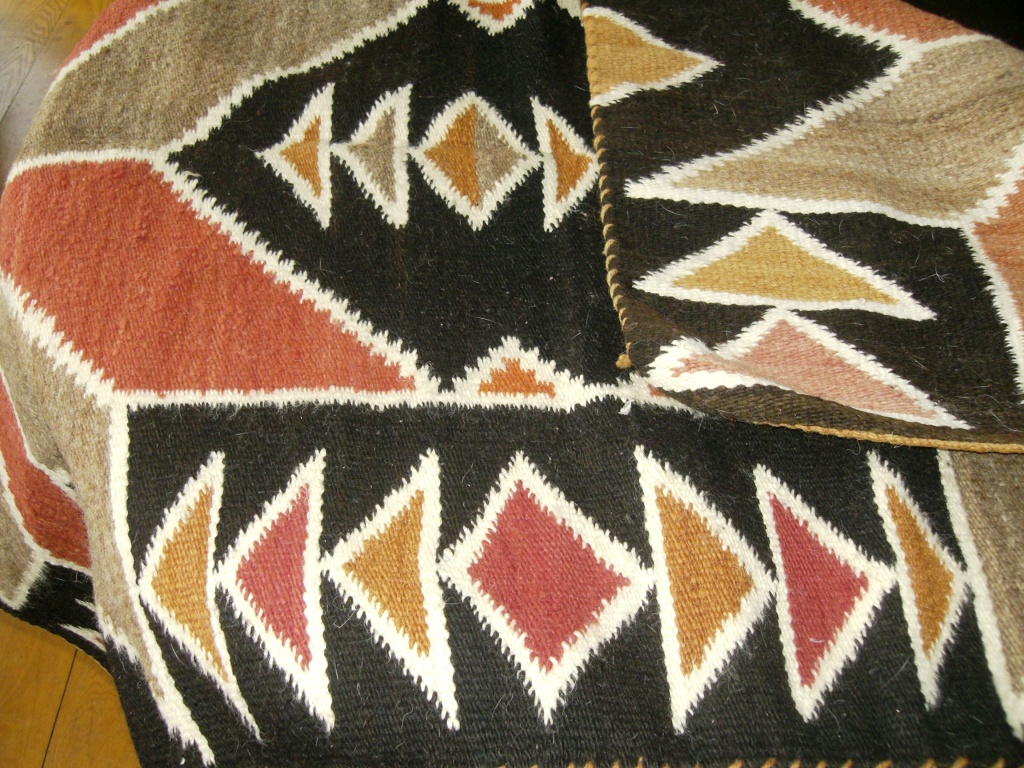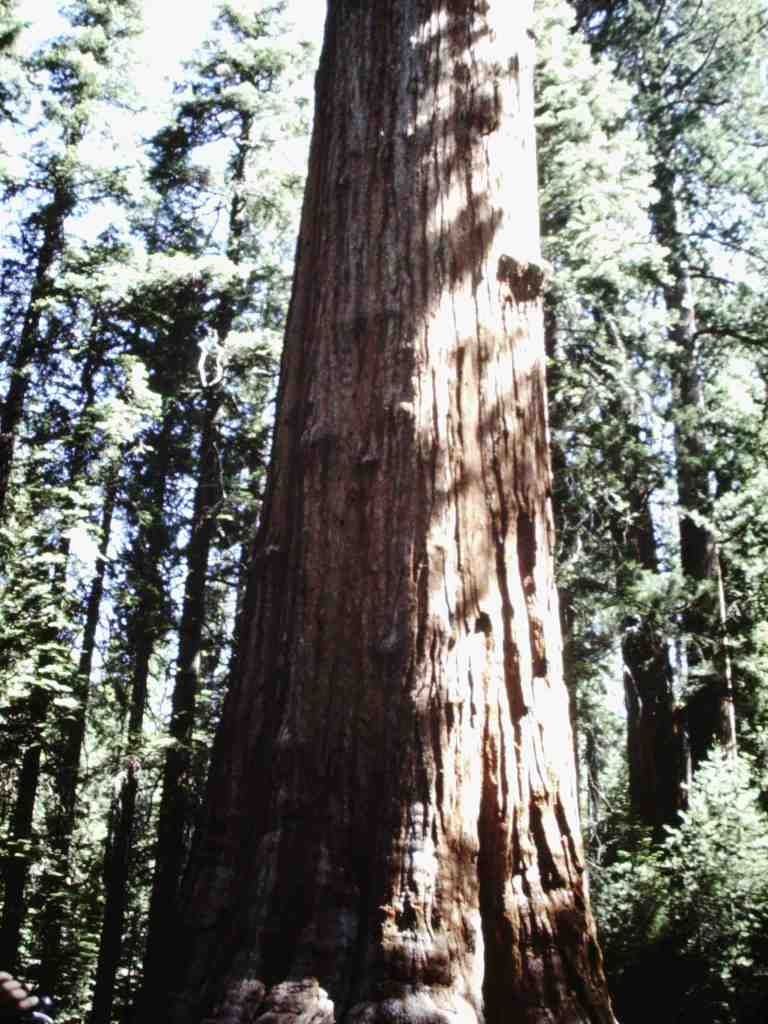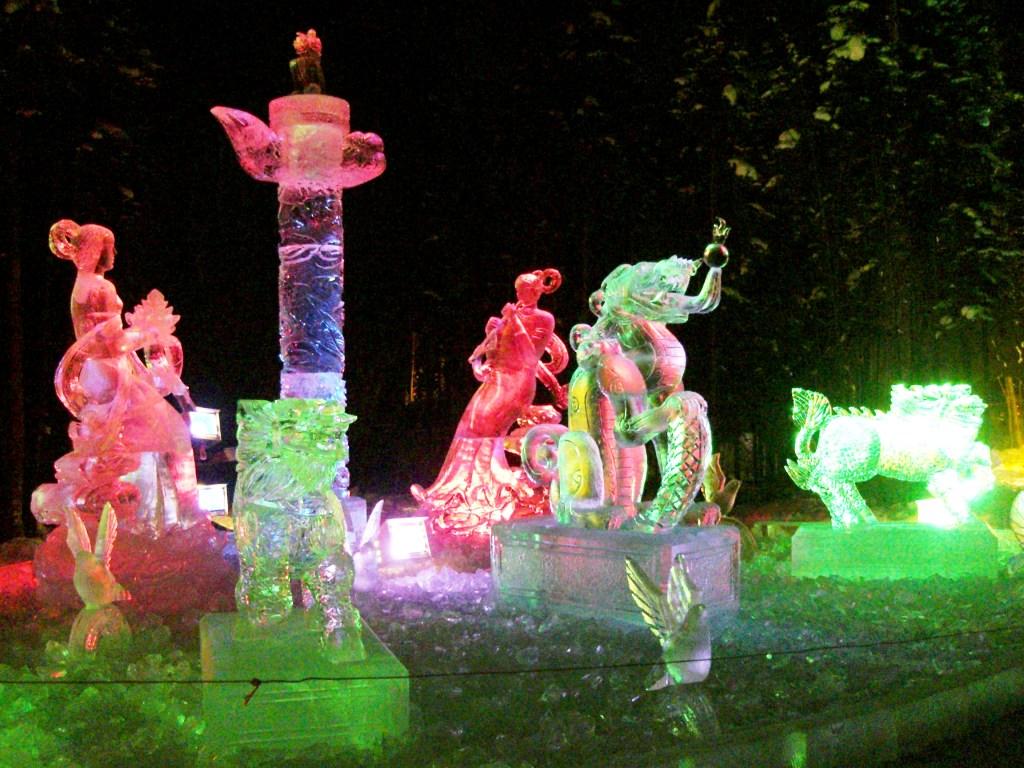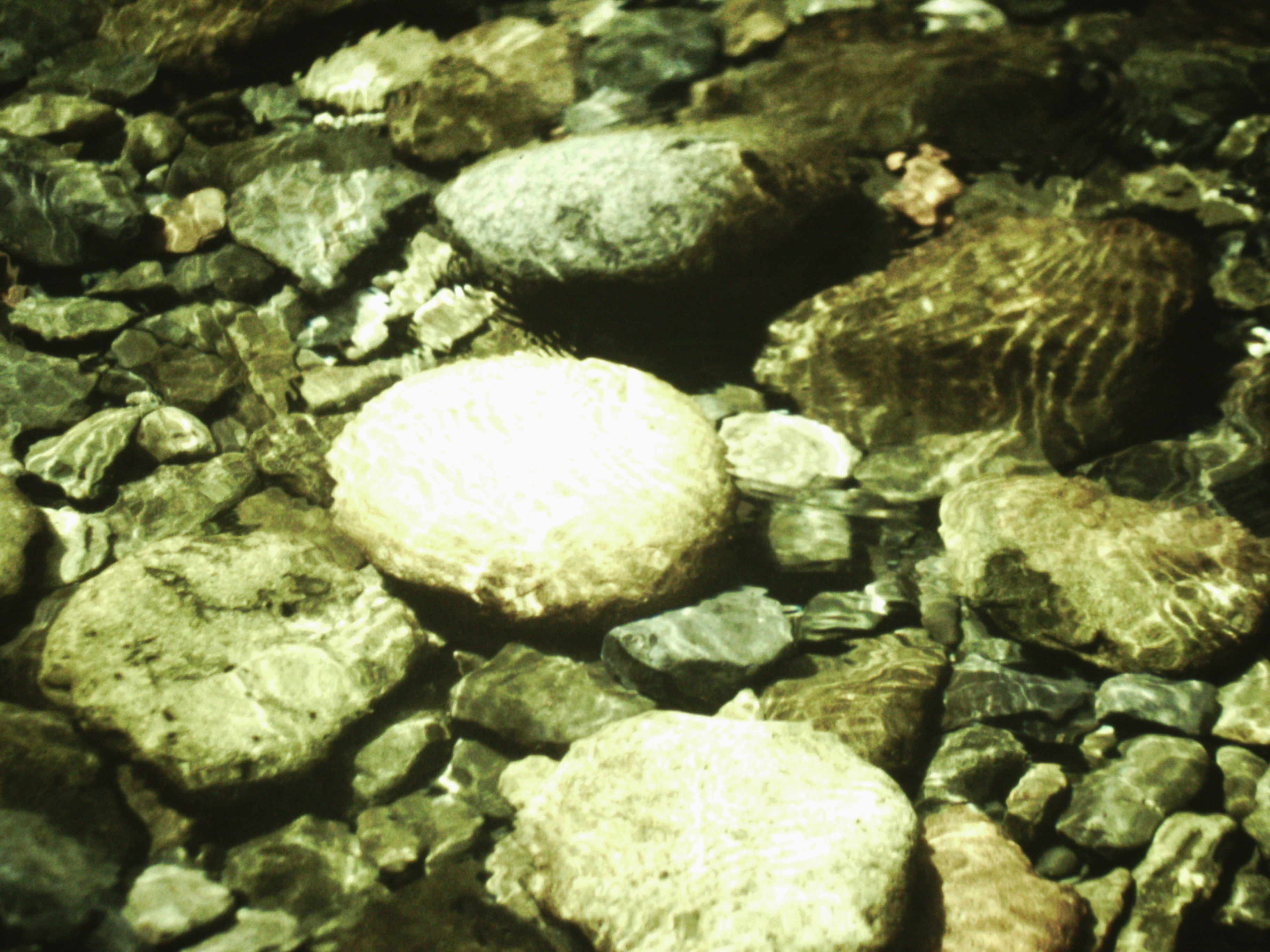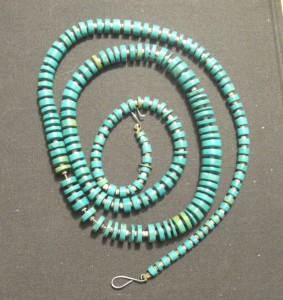
I am backpacking in New Mexico, following a dusty dirt back road to the back of beyond, when a battered van pulls up and stops. A woman with a broad, brown face and a long black braid says hello, and wants to known what what I’m doing. I describe my journey and after few moments, she asks if I’d like to buy some “Indian jewelries.” A companion steps out of the van and shows me a small selection of turquoise beads, obviously hand-worked.
It doesn’t really make much sense for a backpacker to trade lightweight currency for heavyweight stones, but my shopping preferences lean toward the serendipitous and the accidental. Standing on the windswept dirt road with no sign of another human in sight, I like the thought of buying something from the person who made it. I choose one, which has a tiny silver tag near the clasp inscribed with the initials of the woman who made it — who is also the woman who is selling it to me.
In Your Bucket Because….
- Southwestern Native American arts and crafts are beautiful, functional, and an authentic representation of the culture.
- The traditional styles of southwestern rugs and ceramics work with many types of decor.
- Good for: Anyone interested in crafts and decor.
The Native Americans of the Southwest have a long tradition of fine crafts: rug makings, dolls-making, jewelry, ceramics, and, more recently, paintings and sculpture. The offerings are as authentic and far more varied — although more expensive than my roadside negotiation — in the Southwest’s major tourist destinations. Albuquerque, Santa Fe, Taos, Phoenix, Tempe, Scottsdale, Flagstaff, Tucson, and Sedona all have shopping and gallery areas, and remote small towns can also be a surprising source of high-quality one-of a kind products, sometimes made by the guy who lives down the road a piece.
Navajo and Pueblo Silver and Turquoise Jewelry
Southwestern turquoise jewelry is ubiquitous. It comes in many different styles and price ranges, from simple turquoise bead earrings and necklaces to inlay work using several different semi-precious stones.
Silver and turquoise beadwork is a hallmark of Navajo jewelry, and authentic silver and turquoise jewelry is available throughout the Southwest, just about anywhere where anything else is sold. Even if it’s just a little grocery store on a reservation or a convenience store by the main road, shoppers can usually find a few pieces of Indian jewelry in a case somewhere. Inexpensive silver earrings and bolo ties can cost as little as a few dollars a piece, while finely wrought, artist-made, one-of-a-kind pieces cost three figures or more.
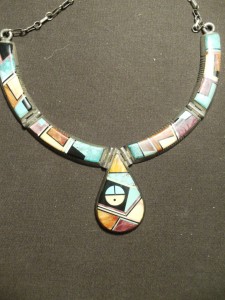
Inlaid stone, usually on silver, is a hallmark of Pueblo Indian jewelry, which is also widely available in the Southwest, especially in Arizona. Turquoise is mixed with other stones and colors, with artisans creating jewelry that mirrors the colors of the Southwestern deserts: the pinks and mauves of the redrock canyons, the reds and oranges of sunset, the turquoise sky, along with the beiges and sands of the desert floor. Inlaid work is popular in earrings, rings, necklaces, and bolo ties.
Zuni and Navajo animal fetish necklaces can contain a single small animal carving, or a whole string of them (prices varying accordingly, from less than $20 to more than a$100.) The animals can be carved in turquoise, coral, onyx, agate, and other stones.
Hopi Kachina Dolls
Another common Arizona souvenir is the kachina, which is a Hopi Pueblo tradition. Kachinas are spirits and deities of the Hopi people and kachina dolls, which are usually about a foot to 18 inches tall, represent the panoply of different spirits in Hopi mythology. The spirits can also be represented in religious ceremonies by people wearing masks. Both masks and dolls are available for purchase; they are not, however, toys, but rather representations of a spiritual tradition, although some dolls are given to children to play with to help them learn their mythologies. Tourist grade dolls start at between $50 and $100 and go up. Fine collectibles and antiques quickly sour in to the thousands — sometimes many thousands — of dollars.
Navajo Rugs and Blankets
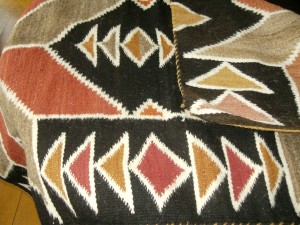
Navajo rugs and blanket are famous the world over. Made of rough sheep wool, they feature geometric patterns (not always strictly symmetrical), usually in a combination of brown, red, black, beige, and white. High-end rugs costing upward of $10,000 are made by premier artisans, and are sold in shops and galleries in Santa Fe and Taos, as well as Albuquerque. Antique Navajo rugs cost even more. Much less expensive rugs and blankets are available in different sizes, weights, and quality. Bargain hunters should stop in at reservation trading posts, where local artisans might have bartered a rug for household supplies, or where visitors might find a rug for sale sitting next to a display of packaged food. Small roughly made rugs can cost less than $100 at a rural trading post, but high-quality rugs can run several hundred to several thousand dollars, and more for collectibles.
Pueblo Ceramics
The tradition of intricately decorated ceramic art dates back hundreds of years in the Southwest, to the Anasazi and other Pueblo people, who adorned their ceramics with carefully executed geometric designs. Pots are still being found as old kitchen middens are discovered, unearthed, and excavated. These middens provide valuable information to archaeologists, and removing ancient pottery found on public lands is illegal. Unfortunately, a black market for these items exists because of their rarity and value to collectors; an intact ancient bowl can sell for tens of thousands of dollars.
Modern versions of Indian pottery, however, are perfectly legal and widely available. Native American ceramics are still made, both as art objects and for practical use in the home. Navajo ceramics tend to be plain and functional, while Pueblo ceramics have more intricate deign work, often following the traditional patterns of the Anasazi and other ancient peoples.
Later in my trip, I arrived at an Indian trading post on the edge of the Ramah Navajo Indian reservation which sits on the Continental Divide near El Morro National Monument. The post sells some basic food supplies, and I notice some rugs hanging up, “That one was made by Maria,” the shop owner tells his wife as he sees me looking at it. “You can see it’s her work. She traded it for food a while back.” There’s also a Navajo bowl, a simple vessel in a rough reddish clay with charcoal blotches. That, too was exchanged in trade.
I’m still on foot, and it makes even less sense for me to buy the bowl than it did to buy the necklace. But I can’t help myself: this simple, functional bowl speaks to me of the rough and harsh land I am crossing on foot, of the simplicity that unites my hiking experience with the experience of people who have eked out livings here. I ask if I can buy it, and for $25, the trading post owner gets it down and wraps it in newspaper for me. I bury the bowl in my pack, hoping I can keep it safe until I get to the next post office up the trail.
Practicalities
Serious shoppers looking for the best jewelry prices should head to Gallup, New Mexico, a dusty town strung out alongside Interstate 40 about 140 miles west of Albuquerque. It’s a sort of wholesale center for Indian jewelry, with discount prices available to the public. One of the larger trading posts is Tobe Turpens, a few minutes off the interstate on Second Street,
To learn more about the traditions that inform the artisanal jewelry, rugs, and pottery of the Southwest, visitors can pay a visit to the Albuquerque Museum, which is dedicated to preserving and presenting the arts, history and culture of Albuquerque and New Mexico’s middle Rio Grande Valley. The museum has its own gift shop, and New Mexico tourists will find many galleries and shops selling native American souvenirs in Albuquerque’s old town, where the museum is located.
Santa Fe’s main square is festooned with one souvenir, crafts, or arts shop after another. This isn’t a place for bargains, but it is a place for quality. The main drag in Sedona, Arizona is similarly flush with mementos to take home.
